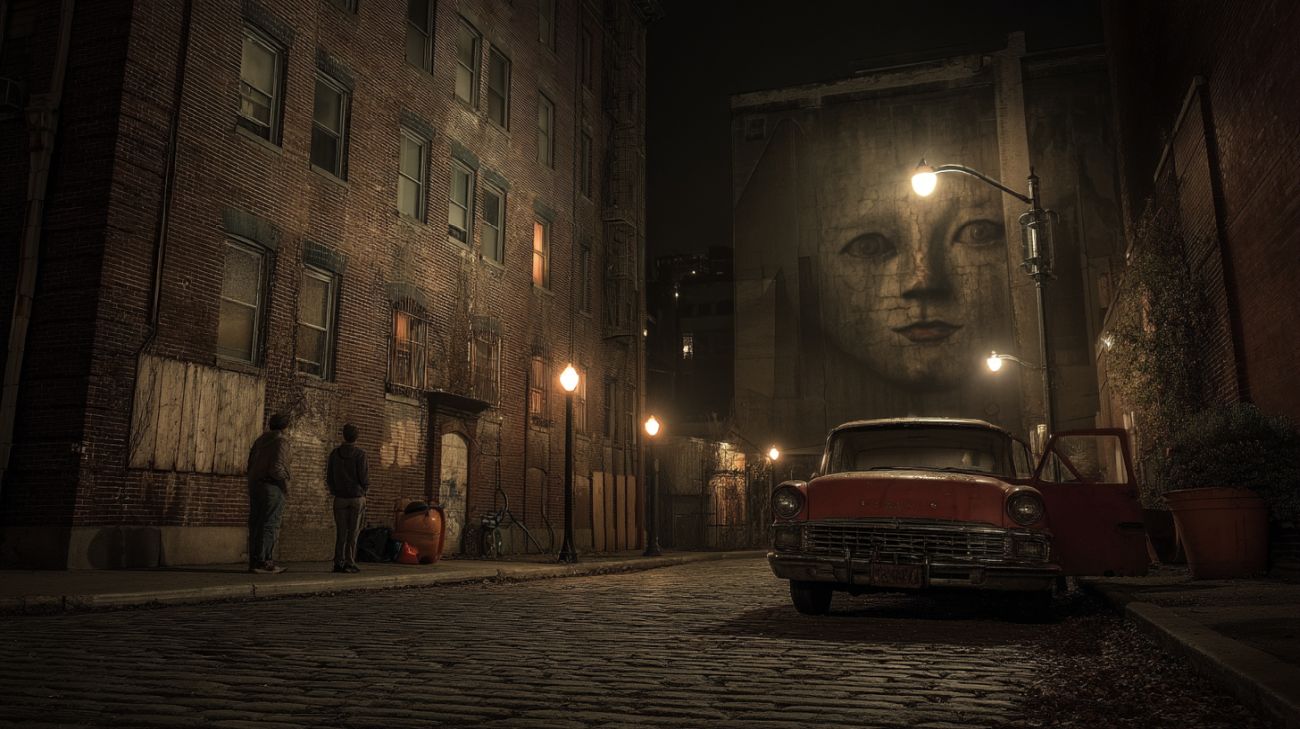Urban legends have long fascinated us, mixing fiction with reality. These tales often seem too outlandish to be real. Yet, some urban myths have real-world connections that are hard to believe.
From mysterious events to true crime stories, urban legends expose dark secrets. They challenge our understanding of what’s real. Some of these myths have been proven true, showing that reality can be scarier than fiction.
Our exploration will reveal documented cases that prove impossible stories are real. Get ready to see the fine line between myth and truth in some of the most unsettling urban legends.
Key Takeaways
- Urban legends often have roots in real-life events
- Some horror stories are more fact than fiction
- Documented cases can validate seemingly impossible myths
- Real-world evidence exists for many supernatural claims
- Urban myths reflect deeper societal fears and experiences
The Haunting of the Winchester Mystery House
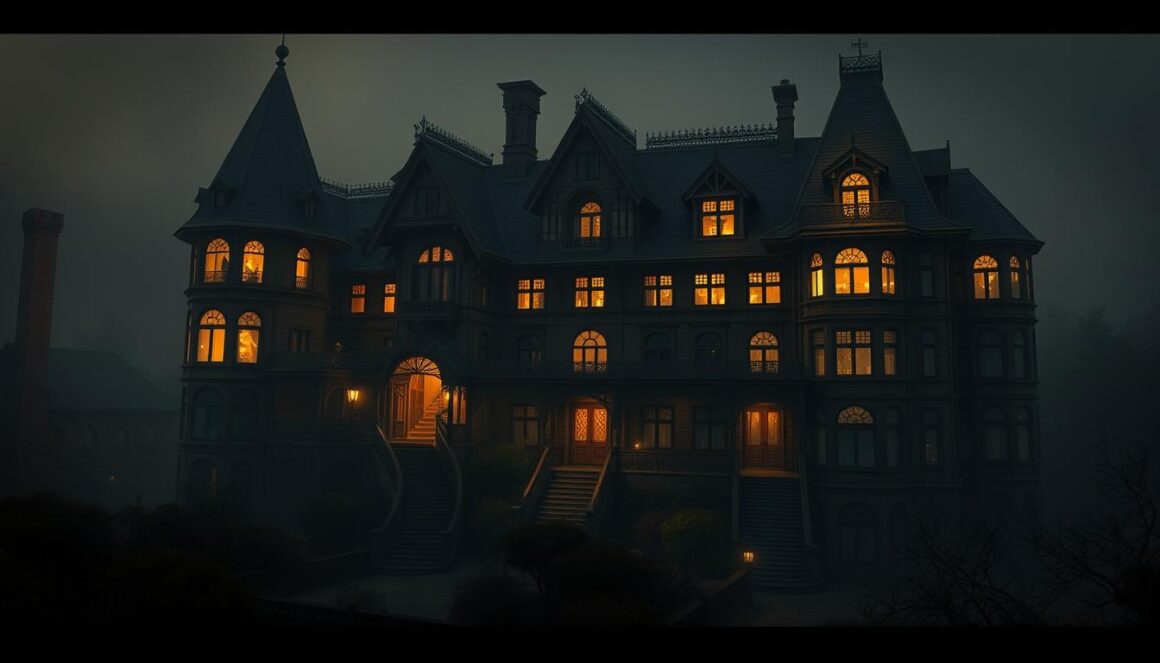
In San Jose, California, the Winchester Mystery House is a cornerstone of American spooky tales. It was built by Sarah Winchester, the widow of the Winchester rifle magnate. This labyrinthine mansion fascinates both ghost hunters and history buffs.
Construction began in 1884 and ended in 1906. Sarah’s grief and supernatural beliefs drove the project. After losing her husband and infant daughter, she sought solace in the house. A medium told her Winchester rifles haunted her, fueling her obsession.
The house’s design is a puzzle, with staircases to nowhere and doors into walls. It had around 500 rooms, 2,000 doors, and 47 stairways. This architectural marvel is a testament to supernatural folklore.
“I am building a house for spirits,” Sarah Winchester reportedly told her workers, driving continuous construction for nearly four decades.
The Winchester Mystery House grew from an eight-room farmhouse to a massive complex. The 1906 San Francisco earthquake damaged parts, but Sarah kept building until her death in 1922.
Today, it’s a top tourist spot, with tours that dive into its paranormal past. Visitors and staff often report strange occurrences, keeping the house’s ghostly legends alive.
The Phantom Hitchhiker of the White Lady
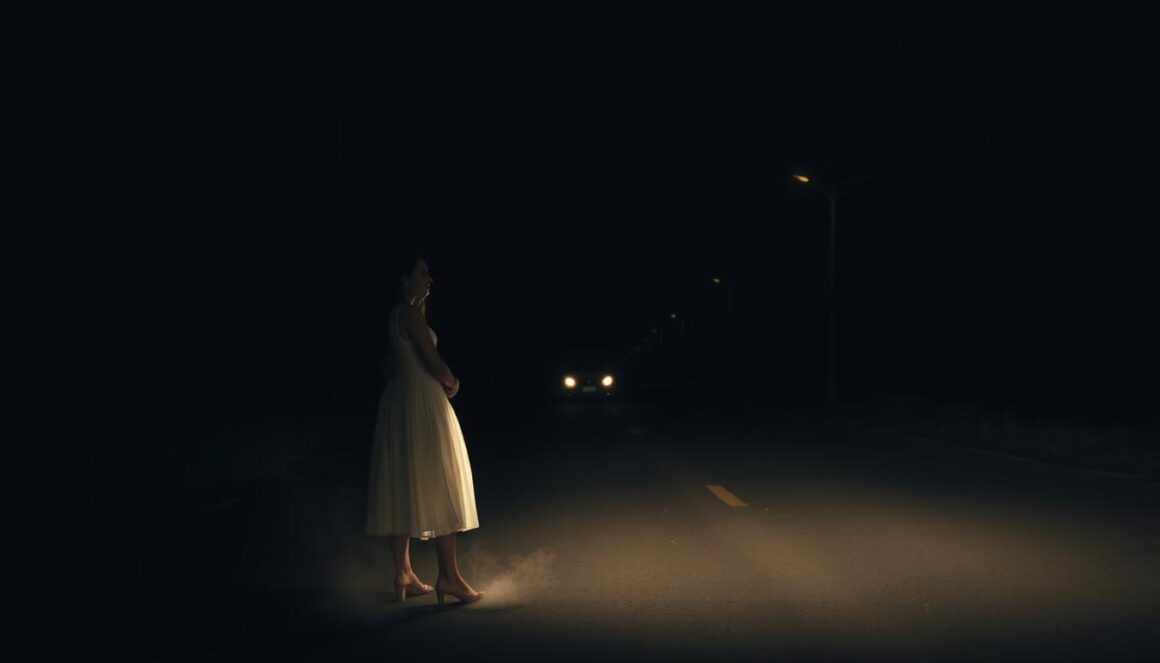
Ghostly travelers have long fascinated people. The legend of phantom hitchhikers is a cornerstone of American folklore. A study by Beardsley and Hankey shed light on these eerie tales, documenting 79 cases of hitchhikers who vanished across the U.S.
The study found striking patterns in these ghostly encounters. About 62% of the stories involved hitchhikers who gave an address, only to vanish upon arrival. These were often young female spirits, making up 60% of the reports.
Regional differences were also noted. In the Chicago area, 9 accounts told of an elderly woman predicting disasters. These tales spread to 16 states, showing how these legends know no bounds.
“Some stories are so persistently told that they blur the lines between reality and supernatural imagination.” – Paranormal Research Archives
The roots of these tales go back centuries. The oldest recorded story of a vanishing hitchhiker is from a 400-year-old manuscript. The first Swedish account was in February 1602. This global phenomenon continues to captivate researchers and storytellers, keeping the mystery alive.
The Legend of the Green Man
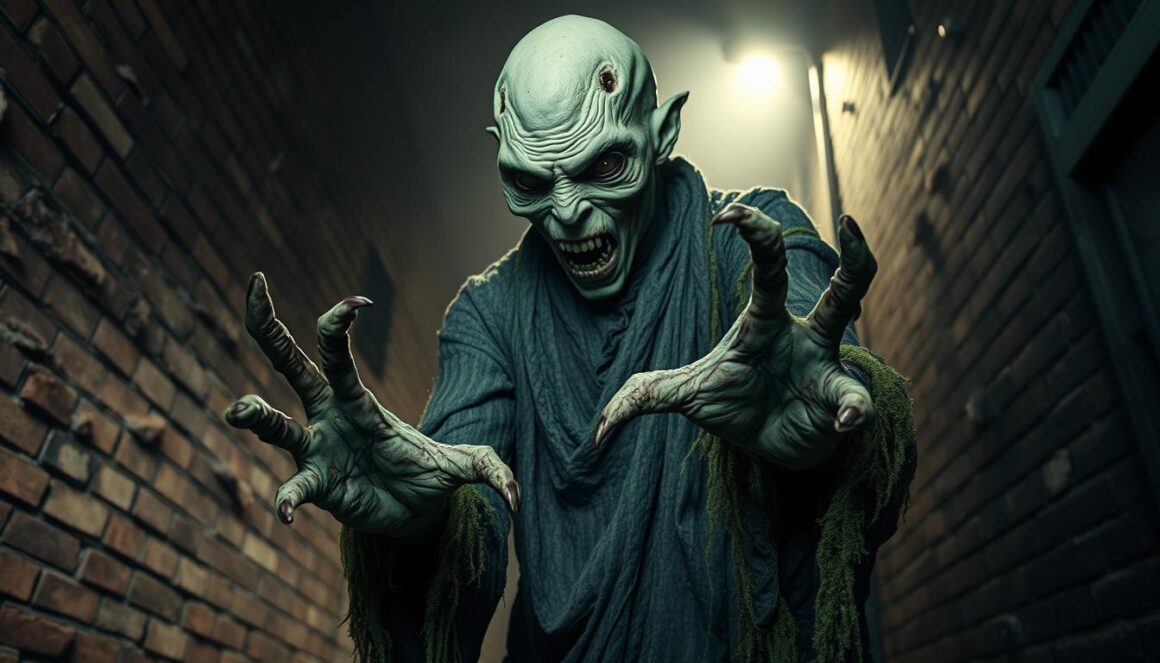
In the realm of sinister legends, the Green Man’s tale stands out. This haunting figure hails from Western Pennsylvania’s eerie mysteries. Raymond Robinson, known as Charlie No-Face, became a captivating urban myth that spanned generations.
Robinson was born on October 29, 1910, in Koppel, Pennsylvania. A tragic electrical accident at 8 years old left him severely disfigured. He lost his eyes, nose, mouth, and part of his arm. This event turned him into a 20th-century urban myth.
Teenagers would drive along Route 351, seeking the Green Man. Robinson’s nightly walks became legendary, with sightings from the 1950s to the 1970s. Locals marked his paths with “Charlie’s Rock” and “Charlie’s Tree.”
“Some legends are born from pain, others from misunderstanding.” – Local Pennsylvania folklore
Despite sensationalized tales, Robinson was a real person who endured an unimaginable tragedy. He died on June 11, 1985, at 74. His legacy blends human suffering with local mythology.
The Green Man legend continues to captivate. It shows how urban myths can transform real human experiences into something both terrifying and compelling.
The Curse of the Crying Boy Paintings
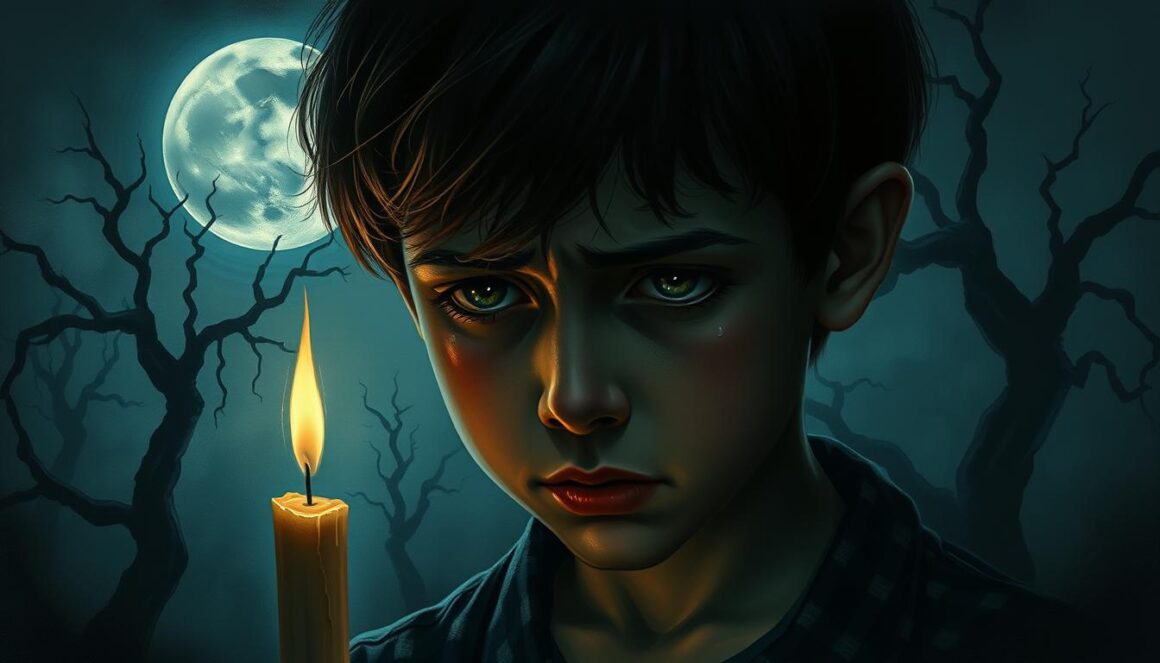
In the mid-1980s, a chilling narrative swept through England, captivating the nation. The Crying Boy paintings became the focal point of a terrifying urban legend. These paintings, mass-produced and widely distributed, were linked to mysterious house fires. This left locals in a state of terror.
Reports started in September 1985, when fire brigades in northern England found something extraordinary. Homes were reduced to ashes, yet the Crying Boy painting remained untouched. Yorkshire fireman Peter Hall documented several incidents where the painting survived while everything else burned.
“The painting always survived, like a ghost watching the destruction,” recalled one local resident.
Horror stories spread rapidly through British communities. Families reported devastating fires shortly after buying the paintings. One account involved a 67-year-old man found dead in a fire, with the Crying Boy painting intact beside him. The legend grew so powerful that The Sun newspaper organized mass bonfires. They collected over 2,500 paintings from anxious readers.
Scientific explanations later suggested the paintings’ resistance to fire might be due to fire-retardant varnish and compressed board material. Yet, the supernatural folklore surrounding the Crying Boy paintings continues to captivate those who love unexplained mysteries and chilling narratives.
The Axeman of New Orleans
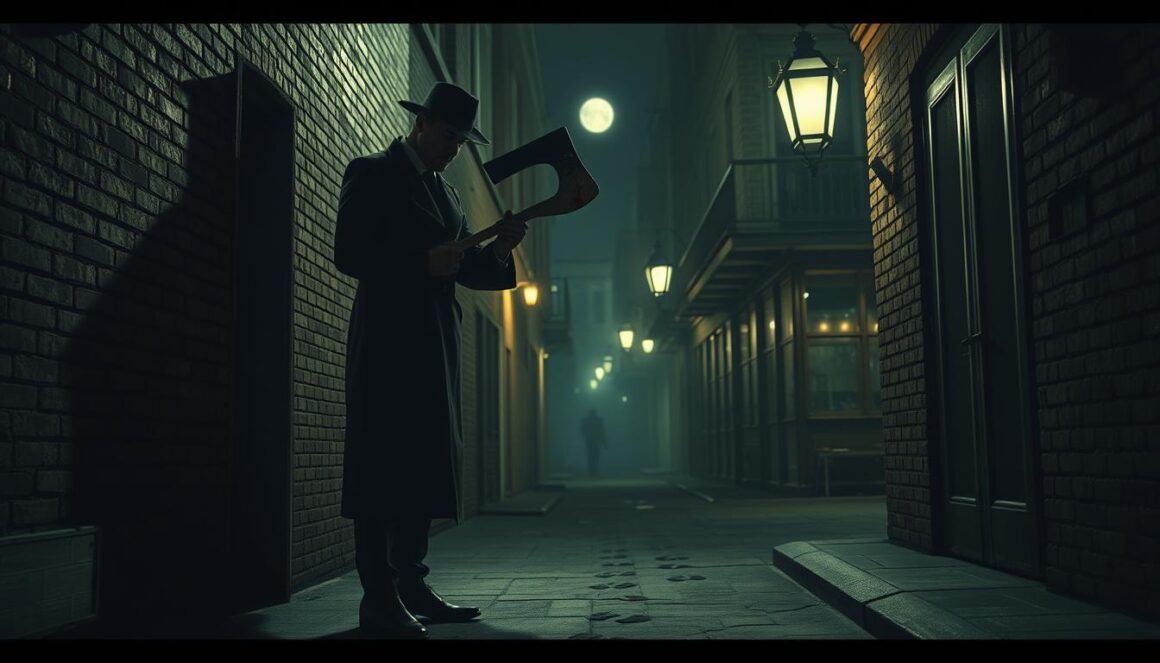
In New Orleans’ shadowy past, a chilling urban legend emerged in the late 1910s. The Axeman, a serial killer, terrorized the city from 1918 to 1919. He became a haunting legend, striking fear into the hearts of many. With six confirmed murders and six more attacks, he targeted Italian-American families, spreading widespread fear.
The Axeman’s attacks were like a nightmare come to life. He brutally struck grocers and their families with an axe while they slept. The Maggio and Cortimiglia families were among his victims, including a young daughter.
The Axeman’s uniqueness lay in his public letter to newspapers. He vowed to spare anyone playing jazz music on a specific night. This led to a city-wide jazz celebration on March 19, 1919, in a desperate attempt to avoid his wrath.
“I am very fond of jazz music, and I swear by all the devils in the nether regions that every person shall be spared in whose house a jazz band is in full swing that night!”
Despite thorough investigations, the Axeman’s identity remained a mystery. His last known victim was Mike Pepitone in October 1919. The attacks then ceased, leaving behind a lasting urban legend that captivates true crime enthusiasts to this day.
The Chilling Tale of Cropsey
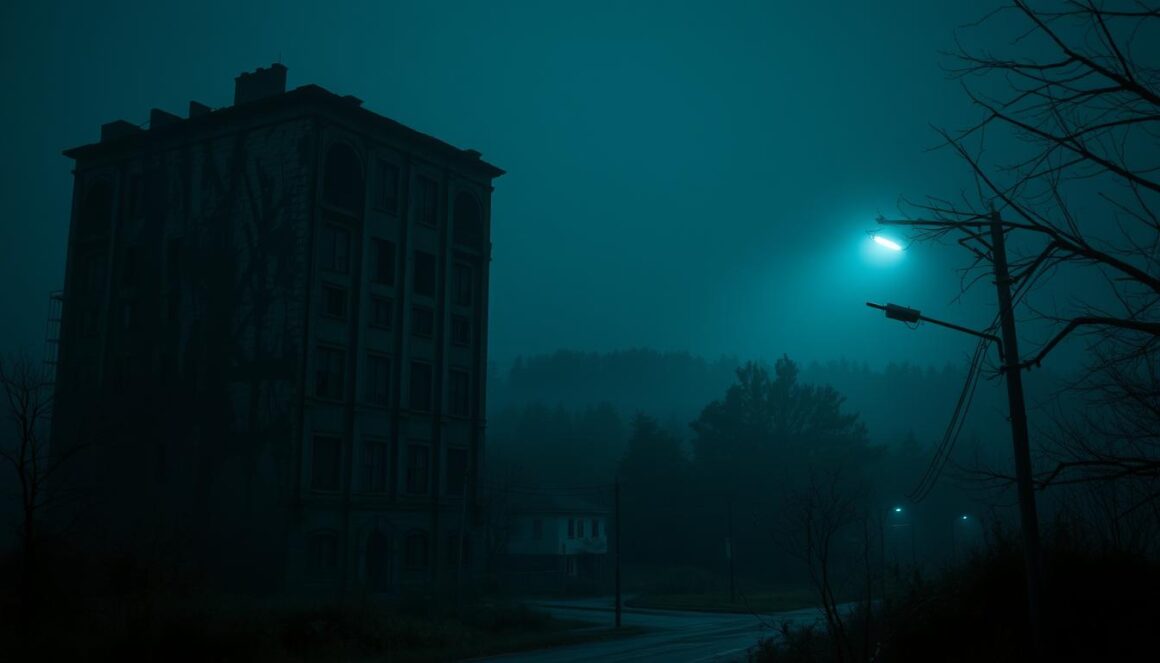
In Staten Island’s shadowy corners, a chilling urban myth emerged from the dark. The Cropsey legend evolved from a campfire tale to a true crime horror that shocked New York for decades.
The Cropsey horror stories began in the late 1950s. They painted a picture of a deranged man targeting children. Local tales spoke of a vengeful figure, driven mad by tragedy, often the accidental death of his family. Summer camps and schools became the breeding grounds for these macabre myths, each retelling adding to the terror.
The legend took a shocking turn with Andre Rand’s involvement in real child disappearances. In 1987, a twelve-year-old girl’s body was found near Willowbrook State School, sparking an intense investigation. Rand, a former school employee, was linked to multiple child abductions, bringing the urban legend to life.
A 2009 documentary, “Cropsey,” shed light on these haunting events. It showed how a local myth could be rooted in chilling reality. Rand was convicted of kidnapping, receiving two 25-years to life sentences. This left the community to ponder the thin line between folklore and horrifying truth.
“Some legends are born from whispers, but the Cropsey story was written in real tears and lost innocence.” – Anonymous Staten Island Resident
The Ghost Ship of the SS Ourang Medan
In the realm of eerie mysteries, the SS Ourang Medan’s tale stands out. It began in February 1948, with distress signals in the Strait of Malacca. These signals sent a chill through nearby ships.
Supernatural folklore tells of a haunting radio transmission. It became legendary: “All officers, including Captain, dead. Probably whole crew dead.” The final message was simple: “I die.” The Silver Star, sent to investigate, found a scene from a nightmare.
The rescue team found every crew member dead, their bodies twisted in terror. No visible wounds were present, but the ship felt an unnatural cold. Witnesses reported seeing their breath, an impossible feat in tropical waters.
Rumors swirled about the ship’s fate, with theories ranging from chemical experiments to secret military operations. The most chilling part? The SS Ourang Medan exploded and sank soon after the rescue team boarded, taking its secrets with it.
“A mystery that defies logical explanation, the SS Ourang Medan remains one of maritime history’s most perplexing enigmas.”
Despite thorough investigations, no clear explanation for the crew’s death has been found. This incident continues to fascinate, blending historical fact with chilling legend.
Wrapping Up: The Creepiest Urban Myths That Turned Out to Be True
Urban legends often blur the lines between reality and fiction. They transform chilling narratives into spine-tingling experiences that captivate our imagination. The spooky tales we’ve explored show how truth can be far more unsettling than any fictional story. From premature burials documented by William Tebb to the bizarre case of Elmer McCurdy’s mummified remains, these stories demonstrate the thin boundary between myth and reality.
Our journey through these urban legends reveals how deeply human curiosity and fear intertwine. Take the story of Raymond Robinson, the real-life inspiration behind the Green Man legend, or the miraculous survival of Jean Hilliard in sub-zero temperatures. These extraordinary accounts remind us that reality can be more shocking than any fabricated ghost story. Medical mysteries, accidental discoveries, and unexplained phenomena continue to fuel our fascination with the unknown.
Reflecting on these urban legends, we gain a profound understanding that truth is often stranger than fiction. The human experience is filled with unexplained mysteries. From bodies discovered in unexpected places to medical anomalies that challenge our understanding of survival. These stories invite us to keep an open mind and recognize that the world is far more complex and mysterious than we might imagine.
We encourage readers to explore their local urban legends, dig deeper into historical accounts, and share the spooky tales that have been passed down through generations. Every community has its own mysterious narrative waiting to be uncovered. This reminds us that the line between myth and reality is often much thinner than we believe.

